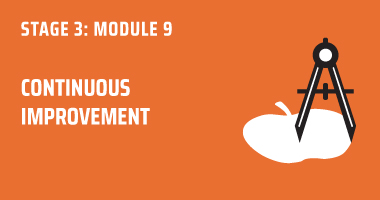Module 9: Continuous Improvement


MODULES IN THIS STAGE
RESOURCES THIS MODULE
PRAXIS AND CONTINUOUS IMPROVEMENT
True praxis depends on continuous improvement, the constant striving to get better. Here the focus is on getting better at expanding our skill and capacity to put in place the structures, processes, and coaching that help under-performing students grow their brain power.
Continuous improvement is not about just doing end-of-quarter data dives and looking every which way at summative test score data. Continuous improvement requires formative assessment for grown-ups, not just the students. Continuous improvement requires us to keep asking the key questions:
- How is this structure, conversation, processes, helping the student come into critical awareness of their agency as a learner?
- What do I need to adjust in my coaching of this student to close my own knowing-doing gap?
Becoming a dreamkeeper-level culturally responsive educator means focusing on putting in place your own feedback loops and formative assessments of YOUR skill and mastery. This is why we cannot do this part alone — self report is always 100%.
I cannot tell you how often I hear, “Oh, I’m already doing that” from a teacher while significant numbers of African American and Indigenous children are failing in her class. There’s a disconnect there. That teacher is solution oriented — the solution, she believes, lies in the strategy. If she uses it, then learning will happen. That’s magical thinking. The only antidote for magical thinking is the inquiry stance that comes with praxis.
Continuous improvement through praxis asks us to connect the dots and keep them connected in order to change the trajectory of learning for our most vulnerable students. It asks us to accept the lessons learned from the first pancake and make the time and effort to tweak the recipe and cooking conditions to get it right.
That’s the only way to become a culturally responsive educator.
Live long and prosper.
